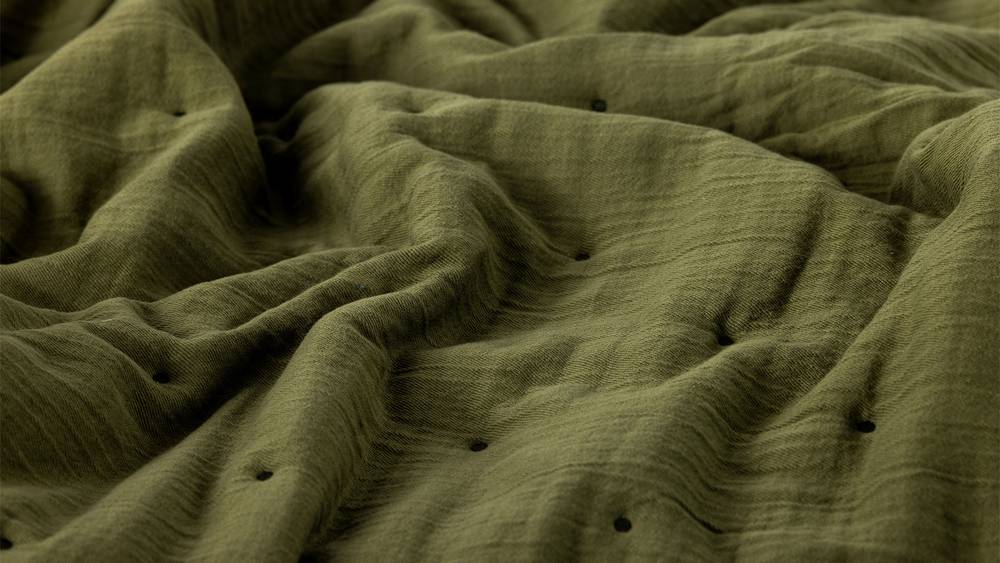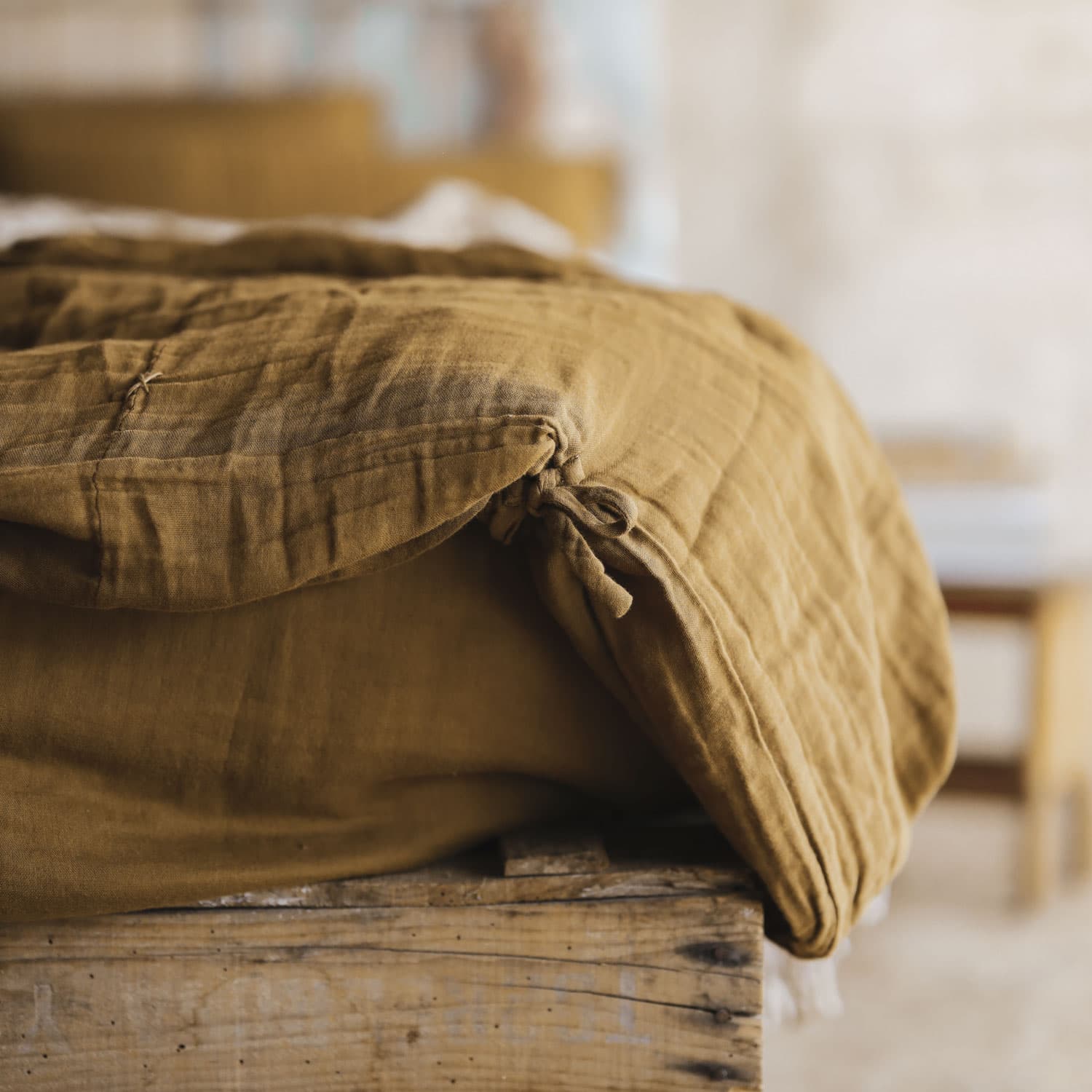Linenshed’s Bestselling Linen Picks for Every Season
Linenshed’s Bestselling Linen Picks for Every Season
Blog Article
Comprehending Linen: The Eco-Friendly Choice for Comfortable Living
When you assume about environment-friendly textiles, linen typically stands out for its one-of-a-kind top qualities. What truly establishes bed linen apart from other materials? Let's discover the fascinating world of linen additionally.
The Beginnings of Bed Linen: From Flax to Textile

Bed linen, among the earliest fabrics recognized to mankind, has a fascinating trip that starts with the modest flax plant. You could be surprised to learn that this plant flourishes in great environments, growing in areas like Europe and components of Asia. When gathered, the flax stalks go through a process called retting, where they're soaked to separate the fibers from the woody components. After retting, the fibers are brushed and spun into yarn, all set for weaving.
When you see bed linen material, you're witnessing centuries of workmanship. Linen has actually been cherished for its all-natural look and really feel, making it a favorite for everything from garments to home fabrics.
The One-of-a-kind Characteristic of Bed Linen
One of the standout attributes of this amazing textile is its breathability. When you use bed linen, you'll discover just how it allows air to flow, keeping you cool down on warm days. This property makes it a best selection for summer apparel and bed linens.
Linen additionally boasts phenomenal moisture-wicking capabilities, drawing sweat away from your skin and permitting it to evaporate swiftly. You won't really feel clammy, also in humid conditions. In addition, bed linen is resilient, commonly becoming softer and much more comfy with each clean, which means it can stand the test of time in your wardrobe.
One more one-of-a-kind aspect is its natural texture; the minor abnormalities offer bed linen a character that enhances your style. Plus, it withstands creases much better than several various other textiles, so you can enjoy an unwinded yet polished look without much effort. Embrace linen, and you'll appreciate its comfort and unique charm.
Environmental Benefits of Linen
When you select linen, you're not just going with an attractive fabric; you're also supporting lasting manufacturing techniques. Bed linen's eco-friendly and compostable nature makes it a clever selection for the atmosphere. Plus, it requires significantly less water to produce compared to various other textiles, helping save this valuable resource.
Lasting Manufacturing Practices
Although several materials have significant ecological effects, linen stands out due to its lasting production techniques. When you choose bed linen, you're opting for a textile made from the flax plant, which needs minimal water and chemicals.
Linen production is typically much less energy-intensive compared to various other textiles, as it entails natural processes instead of artificial treatments. By sustaining linen, you're contributing to an extra sustainable textile sector that prioritizes eco-friendly techniques. Choosing bed linen not just enhances your convenience but likewise straightens your values with environmental duty.
Compostable and eco-friendly Material
Bed linen's environment-friendly nature prolongs beyond its sustainable manufacturing; it's additionally eco-friendly and compostable, making it an outstanding choice for environmentally aware customers. When you select linen items, you're deciding for materials that damage down naturally, returning nutrients to the earth. Composting bed linen can enhance soil, advertising healthy and balanced plant growth.
Low Water Intake
Among the standout benefits of bed linen is its low water consumption throughout growing. Unlike cotton, which needs substantial watering, linen's flax plant flourishes on minimal water, making it an extra lasting choice. You'll value understanding that for every ton of bed linen created, considerably much less water is needed compared to several other fabrics. This indicates that selecting linen aids preserve vital freshwater resources, which is important in today's environment. Additionally, bed linen's all-natural dry spell resistance permits it to expand in less-than-ideal problems, additionally decreasing its environmental impact. By choosing bed linen, you're not just spending in high quality; you're likewise supporting a textile that advertises liable water usage and adds to a healthier planet for future generations.
Linen vs. Other Fabrics: A Contrast
When you contrast linen to other textiles, you'll notice its exceptional breathability and comfort, making it ideal for cozy climate. And also, linen attracts attention for its sturdiness and long life, often lasting longer than many typically utilized materials. As you consider your selections, the environmental influence of each fabric will likewise play an essential role in your decision.
Breathability and Comfort
Breathability is a vital factor in choosing fabrics for convenience, especially in warm weather condition. Bed linen attracts attention among materials for its remarkable ability to enable air circulation. Unlike artificial fabrics, which can trap warm and wetness, bed linen's natural fibers wick away sweat, keeping you completely dry and great. When you put on linen, you'll discover exactly how it feels light versus your skin, boosting your convenience during hot days.
Cotton is often commended for its gentleness, yet it does not match linen's breathability. If you focus on comfort, specifically in summer, linen should be your best choice.
Durability and Long Life
While lots of fabrics offer varying degrees of durability, linen genuinely succeeds in long life, making it a smart investment for your wardrobe. Unlike cotton or synthetic products that might put on out promptly, bed linen obtains more powerful with each laundry. You'll discover that linen's breathable nature also decreases wear from sweat and moisture, which can damage various other textiles.
Environmental Influence Comparison
Although many fabrics add to ecological concerns, linen sticks out for its green top qualities. Unlike cotton, which calls for large water sources and pesticides, linen is made from flax, a plant that grows on marginal water and needs fewer chemicals. This suggests you can feel good concerning your option while minimizing your carbon footprint.
When contrasted to synthetic fabrics like polyester, bed linen's biodegradability radiates. While polyester can take hundreds of years to decompose, bed linen breaks down naturally, returning nutrients to the dirt.
Selecting linen not just promotes lasting farming methods but additionally supports a much healthier world. By opting for bed linen over traditional fabrics, you're making an aware choice that benefits both your convenience and the environment.
Taking care of Your Bed Linen Textiles
To ensure your bed linen fabrics stay in terrific condition, you'll desire to follow some uncomplicated care standards. Clean your bed linen in chilly water on a mild cycle to prevent it from diminishing or shedding its shape. Prevent using bleach, as it can damage the fibers. Rather, choose a moderate cleaning agent that's without rough chemicals.
When it comes to drying, air drying is finest. Choose a low warm setting and eliminate the things while they're still slightly damp to decrease creases if you make use of a dryer. Iron the linen while it's still damp for simpler handling, or heavy steam it to maintain it looking crisp.
For storage space, maintain your bed linen in a cool, dry place. Prevent direct sunlight to protect against fading. With these simple methods, your linen textiles will maintain their charm and last for many years, making them a sustainable addition to your lifestyle.
Integrating Linen Into Your Home Design
Taking care of your linen textiles not only maintains their top quality yet additionally opens a globe of possibilities for integrating them into your home design. You can start small by including bed linen throw pillows to your sofa, quickly raising the space with texture and heat. Take into consideration bed linen curtains that filter sunlight beautifully, developing a soft, ventilated environment in any area.
For a more rustic appearance, Linen Australia try using bed linen tablecloths or joggers during dishes; they add a stylish touch and are easy to clean. If you're feeling daring, mix and match various linen shades and patterns to create a special, layered result.
Don't ignore bed linen blankets-- curtain one over a chair or your bed for an inviting feeling. By thoughtfully incorporating linen into your décor, you boost both comfort and style, making your home a serene resort.
The Future of Bed Linen in Sustainable Living
As customers increasingly prioritize sustainability, bed linen becomes a frontrunner in green textiles. Its production uses much less water and chemicals compared to traditional cotton, making it an extra eco responsible option. As you look in the direction of a sustainable future, integrating bed linen right into your wardrobe and home can significantly lower your carbon footprint.
Innovative brands are currently concentrating on sustainable practices, from utilizing natural flax to implementing circular economic climate concepts. You'll locate that bed linen's sturdiness indicates it lasts much longer, decreasing the need for regular replacements.
Additionally, as even more individuals welcome minimal way of livings, bed linen's ageless allure and versatility will keep it appropriate. By picking linen, you're not just choosing comfort; you're also supporting sustainable practices.
In the upcoming years, the demand for linen is expected to grow, solidifying its place in a more eco-conscious world. Take into consideration making bed linen a staple in your lasting living trip.
Often Asked Concerns
Is Linen Suitable for People With Allergic Reactions?
Yes, bed linen's all-natural fibers are hypoallergenic, making it appropriate for people with allergies. Its breathable nature aids reduce dampness and microorganisms build-up, adding to a healthier sleeping setting. You'll likely locate it comfy and risk-free.
Can Linen Be Colored Quickly?
Yes, you can dye linen easily. Its all-natural fibers soak up dyes well, enabling dynamic colors. Simply make sure you use the right color kind and follow correct strategies to accomplish the desired outcomes without damaging the textile.
Exactly How Does Bed Linen Contrast in Durability to Cotton?

What Weight of Linen Is Best for Summer Season Apparel?
For summer season garments, lightweight bed linen around 4 to 5 ounces per lawn is optimal. It keeps you cool, breathable, and comfy in heat (Australia Linen). You'll appreciate just how it drapes and steps with you effortlessly

Can Linen Be Made Use Of for Outdoor Furnishings?
Yes, you can make use of bed linen for exterior furnishings. It's breathable and sturdy, making it a great choice for warm weather. Simply make certain to pick a dealt with version to stand up to the aspects and preserve its appearance.
Conclusion
Integrating bed linen right into your life not only boosts your comfort but additionally supports an extra sustainable future. With its unique properties and marginal environmental influence, linen is a clever choice for your home style and way of life.
Bed linen's compostable and biodegradable nature makes it a wise choice for the atmosphere. By incorporating bed linen right into your home, you're not just appreciating its comfort and longevity; you're likewise aiding and supporting environment-friendly practices produce a much healthier planet. The Future of Bed Linen in Lasting Living.

Report this page